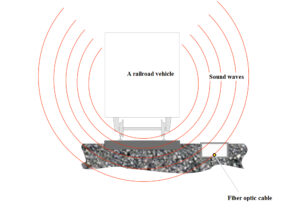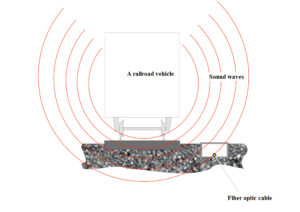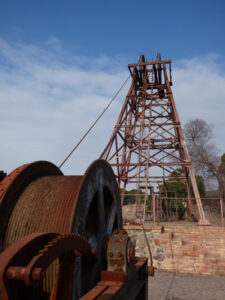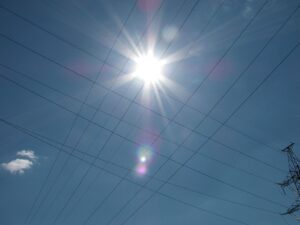 The sensing system is a fundamental device that presents data information about the features of the surrounding environmental conditions to electronic tools. The information obtained through distributed fiber sensing is used for analytical purposes or processed and employed to take specific actions. Herewith, today distributed sensors find widespread application since they are applied in most of the human daily used items.
The sensing system is a fundamental device that presents data information about the features of the surrounding environmental conditions to electronic tools. The information obtained through distributed fiber sensing is used for analytical purposes or processed and employed to take specific actions. Herewith, today distributed sensors find widespread application since they are applied in most of the human daily used items.
For instance, distributed optical fiber sensors apply light to probe a kilometer-length optical fiber employed as the sensing system. Thus, distributed sensors allow for the detection of strain or temperature variations along the fiber length. The principle of distributed optical fiber sensor operation is based on “scattering processes happening along with the optical fiber, either Rayleigh stimulated Brillouin or Raman scattering”.
The characteristics of various scattering processes offer different applications to distributed sensors. For example, distributed optical fiber sensors based on Raman technology are regarded as highly efficient temperature sensing devices. Recent developments in sensing technology enable us to reach a better resolution, higher bandwidth, or longer-range operation.
Nowadays new sensing technique to interrogate an optical fiber applying the Rayleigh backscattering process is considered to be very advanced. Such distributed sensors are based on phase-sensitive optical time-domain reflectometry (OTDR) technology, herein, they use a train of linearly-chirped optical pulses resulting in a quite simple conventionally used methodology. Additionally, distributed acoustic sensing for phase-sensitive OTDR technology provides amazing robustness against laser phase noise and a record measured sensitivity.
The technology of distributed acoustic sensing for phase-sensitive OTDR has been experimentally demonstrated a couple of years ago, based on the application of a chirped-pulse as a probe, in an otherwise direct-detection-based standard setup: chirped-pulse (CP-)ΦOTDR. The benefits of DAS systems include intrinsic immunity to fading points and use of direct detection, therefore, distributed acoustic sensing offers reliable high sensitivity measurements.
Finally, DAS technology for OTDR finds its use in diverse applications that include seismology or civil engineering (monitoring of pipelines, train rails, etc.), and new applications based on distributed acoustic or temperature sensing appear everyday. Such a distributed optical fiber sensor can operate in up to 100 km with a low cost-setup, showing performances close to the attainable limits for a given set of signal parameters.
Optromix is a DAS system manufacturer that provides top of the line distributed acoustic sensing systems suitable for monitoring of commerce networks. If you have any questions or would like to buy a DAS system, please contact us at info@optromix.com


 Distributed fiber optic sensing
Distributed fiber optic sensing Distributed acoustic sensing
Distributed acoustic sensing Perimeter security is considered to be a significant problem for airports all over the world. For example, Denver International Airport is one of the largest airports in the USA that includes 25 airlines. Its size requires constant security operations, and it is highly challenging because the larger an airport’s size is, the bigger its perimeter, the more difficult it becomes to save integrity and police borders.
Perimeter security is considered to be a significant problem for airports all over the world. For example, Denver International Airport is one of the largest airports in the USA that includes 25 airlines. Its size requires constant security operations, and it is highly challenging because the larger an airport’s size is, the bigger its perimeter, the more difficult it becomes to save integrity and police borders. Fiber-optic distributed acoustic sensing
Fiber-optic distributed acoustic sensing
 Distributed Acoustic Sensing (DAS)
Distributed Acoustic Sensing (DAS) Fiber optic products are progressively being deployed in many upstream and midstream applications. Nowadays fiber optic equipment is regularly used to provide high bandwidth telecommunications and infrastructure for SCADA (Supervisory Control and Data Acquisition) and is being used more and more to sense pressure, temperature, and strain along buried onshore and subsea pipelines and downhole. Pipeline leakage and intrusion detection continue to be a difficult issue because existing leak detection methods and the traditional methods of guarding pipelines have proven inadequate in the prevention of leaks and deferring third-party intrusion into pipelines and plant facilities.
Fiber optic products are progressively being deployed in many upstream and midstream applications. Nowadays fiber optic equipment is regularly used to provide high bandwidth telecommunications and infrastructure for SCADA (Supervisory Control and Data Acquisition) and is being used more and more to sense pressure, temperature, and strain along buried onshore and subsea pipelines and downhole. Pipeline leakage and intrusion detection continue to be a difficult issue because existing leak detection methods and the traditional methods of guarding pipelines have proven inadequate in the prevention of leaks and deferring third-party intrusion into pipelines and plant facilities. Distributed Acoustic Sensing (DAS)
Distributed Acoustic Sensing (DAS)